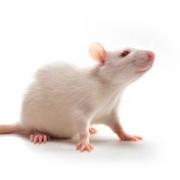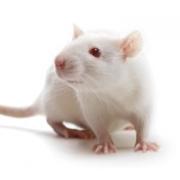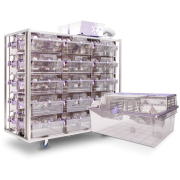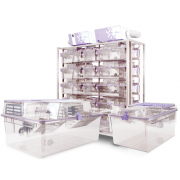Genetics - International Genetic Standarization (IGS) Program
The intent of this paper is to provide a clear definition of the International Genetic Standardization (IGS) program at Charles River. Adopted by Charles River in 1992, IGS applies to the management of the health and genetics of outbred stocks and inbred strains of research animal models, particularly mice and rats. Although this program embraces the standardization of four basic elements — genetics, health, quality assurance, and operations — this reference paper solely focuses on the genetic component. The objectives of the IGS program vary slightly depending upon the type of colony being managed. For outbred stocks, the intent is to minimize inbreeding, maintain heterozygosity and manage genetic drift that would otherwise lead to colony divergence among Charles River colonies worldwide. For inbred strains, IGS helps minimize subline divergence due to genetic drift, and also helps prevent genetic contamination by mismatings with other strains. This genetics management program, coupled with the other three elements (health, quality assurance, and operations), enables Charles River to breed research animals with uniformity, regardless of production location throughout the world.
Genetic Management of Outbred Stocks Genetic drift over time, and the resultant genetic divergence between colonies, is the inevitable result of breeding stocks and strains in isolation. Over many generations, random genetic drift can be expected to cause at least moderate genetic divergence among rodent colonies. While genetic drift is a natural, unavoidable occurrence in any population, the challenge in breeding outbred animals is to maintain the diversity at the level of the individual, yet somehow standardize multiple production colonies of these animals that are geographically separated so that each colony has the same range of genetic variation. Until the development of the IGS CD® rat, Crl:CD(SD), commercial breeders, including Charles River, started new colonies of outbred animals by cesarean rederivation, colony transfer, or other methods. A random mating system was applied to these new colonies to ensure that genetic diversity was maintained. However, because each new colony was bred in isolation relative to other colonies of the same stock, genetic drift was inevitable over time. To address this issue and produce animals of similar genetic background regardless of which colony they came from, Charles River established a foundation colony of Crl:CD(SD) in 1992. This colony was established in Wilmington, MA, using 100 pairs of breeders derived from existing Crl:CD(SD) colonies located throughout the world. One rederived pup from each of 200 litters was then used to set up the foundation colony in isolators. This enabled us to capture a broad genetic sample while ensuring a clean health profile. A circular pairmating system was implemented in the foundation colony to prevent inbreeding. Offspring from each breeding pair in the foundation colony were then used to restock barrier rooms at all Charles River locations where Crl:CD(SD) animals were being produced. Currently, Charles River maintains the CD® rat and several other stocks, including the Wistar and Wistar Han rats and CD-1® mouse, under the IGS program.


Instead of a random mating system within the barrier production rooms, IGS CD® rats are produced using a purposeful outbreeding system that employs block mating to minimize the chance of inbreeding. Another key element in the genetic management of this outbred stock is the use of migration. Every three years, animals from the foundation colony are migrated to production colonies on a rotational basis to replace some of the breeders (Figure 1). Every year, a sufficient number of animals are migrated back into the foundation colony from production colonies to replace 5% of the foundation breeding pairs (Figure 2). This system of forward and backward migration acts as a “genetic glue” that links all of the colonies and ensures that none diverge too far from the others. The end result is that all of the colonies are genetically merged into one large colony that resides in multiple locations around the world.
Genetic Management of Inbred Strains
In contrast to outbred stocks where genetic management is directed at preserving existing genetic diversity, management of inbred strains is directed at maintaining authenticity and the highest possible levels of genetic uniformity. Inbred strains are defined as animals produced by a minimum of 20 generations of brother-sister mating, traceable to a single founding pair. This mating structure results in animals that are genetically (essentially) identical within each strain; i.e., fundamentally free of genetic differences that could increase variation in experimental results. Charles River uses a pyramid mating system (see Figure 3) coupled to a foundation colony for all inbred strains. In this system, the foundation colony serves as the genetic and health standard and provides breeders for the top level of the pyramid in every barrier room. This top level, the nucleus colony, is composed of a relatively small number of pedigreed brother-sister mating pairs that produce breeders for the next level of the pyramid, in addition to replenishing itself. In larger colonies, the next level is called the expansion colony, and it provides breeders to the production colony which in turn produces the animals that are commercially available. Strains that are produced in smaller numbers will not have an expansion colony, so the nucleus colony will provide breed stock directly to the production colony level. The unidirectional flow of breed stock in this system helps to ensure that any genetic changes or mutations, which would be more likely to occur in the larger expansion or production colonies than in the smaller nucleus colony, will “wash out” within a single generation.

As with all populations, permanent genetic differences may be introduced through genetic drift. However, this can be minimized by keeping the “self-replenishing” population small; a smaller population has fewer total mutations. In addition, the majority of commercial breeders produce multiple inbred strains in the same facility, so the risk for genetic contamination of one strain by another (i.e., mismating) also exists. While this possibility is minimized through various management practices (e.g., strains bred within the same room must have different coat colors), routine genetic testing must be employed to certify that mismating has not occurred. Charles River utilizes a panel of 32 single nucleotide polymorphism markers (SNPs) that is capable of distinguishing all inbred strains bred at our various facilities from one another. Animals from each level of the production pyramid from each colony worldwide are sampled on a quarterly basis, thus certifying the genetic authenticity of every inbred strain. Although the accumulation of genetic differences via drift is inevitable, Charles River effectively manages this drift using several methods. Phenotypic changes may be an indication of genetic changes, and barrier room staff members are trained to detect and report any such occurrences. Selective culling of phenotypic deviants, coupled with the use of the pyramid colony management program, helps stop the spread and is an effective short-term management tool. Similar to outbred stocks, a managed migration program is used to help maintain genetic uniformity among strains raised at multiple locations. Nucleus colonies are replaced every three to five years (within 10 generations) by migrating new breed stock from the foundation colony to the barrier rooms. As a safeguard against any large-scale disaster affecting the foundation colonies of several strains, Charles River has cryopreserved a sufficient number of embryos for multiple, complete replacements of those populations.
Conclusion
As a global company with rodent production facilities in multiple locations, Charles River is uniquely challenged with maintaining genetic quality across all strains, stocks and locations. The program described above helps to ensure that animals produced at any of our global production facilities have the same genetic profile if they are an inbred strain or the same relative level of genetic heterogeneity if they are an outbred stock.







